One of the most infamous issues with S197 Mustangs is the MT-82 6-speed manual transmission and its seemingly never-ending list of problems. Many who have driven it have experienced various issues and general complaints with its operation. Let’s have a look at each of the issues and what has been done to correct them.
What Causes Mustang GT Manual Transmission Problems? Ford has acknowledged several issues including thick, cold transmission fluid, high RPM operation, gear clash, faulty operation, and clutch plate bolt failure. The aftermarket and Mustang owners have identified fixes for all of these issues to improve function and performance of the transmission.
Let’s have a look at some things the aftermarket has suggested as solutions to improve the shift quality and operation of the Getrag MT-82 transmission.
Poor Transmission Operation Causes and the NHTSA Investigation
Quite a few people complained to the National Highway traffic safety administration about the Getrag MT-82. So many, in fact, that they actually investigated the build quality and operation of the transmission and issued a formal report.
According to their findings, early transmissions delivered with model years 2011 and 2012 had faulty clutch plate bolts. The clutch plate bolts would loosen and the clutch wouldn’t be aligned properly to make contact with the flywheel. Evidently, this was corrected by Ford in later models and in a maintenance TSB.
I wasn’t very impressed with the overall findings of the report. Many times throughout the document, I was left with the impression that “aggressive driving” and assumed poor operation was being blamed for this.
Essentially, drivers were being blamed for the strange operation of the transmission. It may be one factor, but I don’t buy it. Mustangs are made to be driven fast. That isn’t a secret.
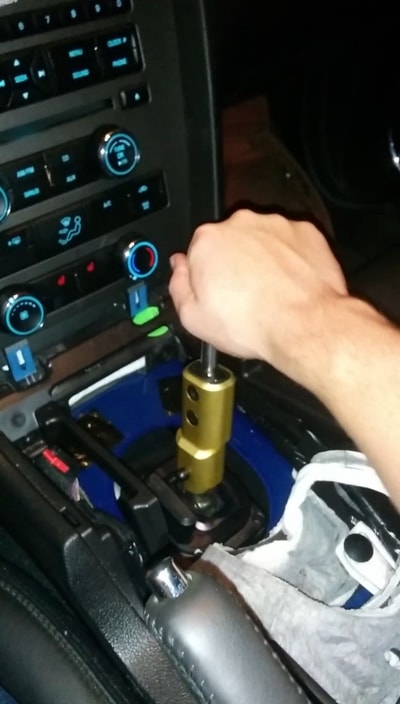 3rd Gear Lockout and Clutch Problems
3rd Gear Lockout and Clutch Problems
Anybody who has driven a Getrag MT-82 transmission can tell you how much they dislike third gear lockout, even though it is hard to describe. During normal driving under 5000 RPM, the clutch will operate as normal and the clutch pedal will return to its starting place without issue. However, several factors, including driving the engine all the way to its redline, will cause the clutch pedal to fail to return to its regular resting position.
It’s certainly a weird feeling. You expect the clutch pedal to be resting on its stop, but it is slightly depressed the next time you go to shift to the next
At the very least, it can be quite distracting when you’re trying to get those perfect shifts. At the very worst, it can cause you to miss a shift and potentially grind your transmission.
A lot of owners blame this effect for the transmission preventing them from shifting to third gear. They push forward on the stick for the next
Getting the 2-3 shift right takes extra finesse and with the following mods, you can make it to third without any problem.
Replacing the Clutch Will Fix It For Good
The very first thing you should look to replace is the clutch if you want to avoid getting locked out of third gear. Any aftermarket clutch you look at is going to be of a higher quality than the stock clutch.
Personally, my clutch has lasted 42,000 miles and counting, about 20,000 of those with the Paxton supercharger. It still holds strong and doesn’t slip even a bit, although I know there are much better aftermarket parts out there.
One thing you cannot avoid is physics. As Ford mentioned in the investigation, high RPM operation is always going to be a factor as the engine redlines at 7500 from the factory and even higher in generation 3 coyote engines. As you press the pedal at the redline to shift next
A lightened pressure plate and overall clutch components will produce less centrifugal force and you won’t get locked out.
The most popular option for replacement clutch seems to be the McLeod Twin Disc RST. Around $750 will get you a nice twin disc clutch capable of handling more than enough naturally aspirated power. Many people who have opted to go to the
Drew recommends SPEC clutches. The Spec 2+ can handle 700 pounds of torque on its single disc. There are lighter to operate then a twin disc and a single disc is going to be much lighter than a twin disc set up.
The “Magic” Amsoil Cocktail Fluid Change
There are also quite a few smaller Band-Aid fixes that can be applied to the transmission that will alleviate the issue, according to other Mustang owners. The first is the “magic” Amsoil cocktail. It is essentially a replacement for the transmission fluid with a friction modifier.
One of the first things that Ford did to alleviate shift issues, especially when the transmission is cold, is to change the fluid from a thicker, higher viscosity fluid to a thinner fluid. The Amsoil cocktail is essentially the same thing, with potentially higher quality components.
Changing the fluid does make sense if you encounter cold-weather shifting issues. I personally notice much “notchier” shifting when it is cold out. It makes sense to go to a thinner fluid if you’re bothered by that sort of thing.
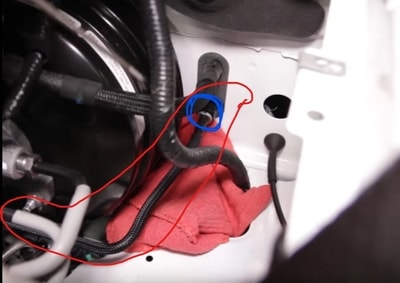 Clutch Line Replacement
Clutch Line Replacement
The next common replacement in the drivetrain is the clutch line. Evidently, Ford cheaped out on another part that is causing issues. There is essentially a thin-walled, weak rubber hose for the hydraulic clutch line that connects the throwout bearing to the hydraulic booster.
Under heavy action, it is theorized that this week clutch line can heat up and expand, reducing pressure, or otherwise collapse, leading to poor action of the clutch pedal.
When these replacement parts first came out, they were all about a hundred dollars each. Now, you can find them for around $50 or $60. $100 was a high price for an arguably inefficient fix in my book, but I might have a second look now that they are much cheaper.
One thing of note is that the installation can be difficult. The clutch line itself winds down the firewall from the brake booster to the transmission. It can also be very difficult to install if you are clumsy because the line itself is connected with two small metal clips that are very difficult to track down if you happen to drop them. Evidently, there are no individual part numbers for the clips and you have to order a whole additional line from Ford to get more.
Shifter Upgrades: Body Mount and Remote Mount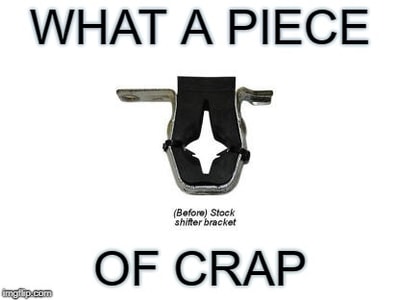
One of the first mods that you should do, regardless of transmission action, is replacing the shifter. In the context of transmission and shifting problems, replacing the shifter with a better overall unit makes sense.
Have you seen the stock shifter bracket? It’s a bent piece of metal with a rubber hose that tied it in between. I wish I was kidding about that. Of course, that thing is not going to stand up to high-performance shifting. Clearly, the bean counters at Ford won the day that this part was discussed at the boardroom table. This unit provides a mushy feel at best.
As the transmission rocks back and forth on the engine
The Best Replacement Shifter Options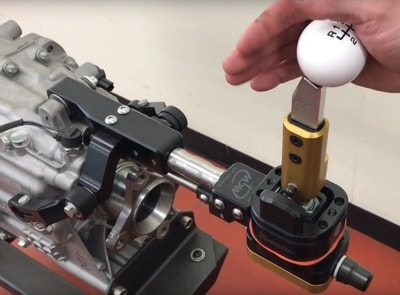
The solution to this is usually one of two options. First, you can get a replacement bracket for around $50-$100. This will replace the bent piece of metal and the hose that Ford gave you from the factory, but you will keep the rest of the shifter. I tried this when I first got my Mustang and it made a huge difference in the shift feel.
The second option is to replace the entire shifter and its supporting system. The two leaders in this area are Barton and MGW.
The Barton Hybrid 3 keeps the body mounted design of the factory shifter for support while providing a much better support bracket to reduce shifter movement. It is a very popular option for the S197 crowd.
MGW designed a shifter that is “solid-mounted” to the transmission and completely eliminates any shifter connection to the body. It is essentially floating with the transmission and is supported by heavy-duty brackets that tie on to the transmission case. The part itself is extremely high-quality and instructions are very detailed.
George Ciamillo at MGW has an incredible reputation for high-quality customer service. I’m a “two out of four wrenches” type guy and I was able to install my shifter at a casual pace over a weekend on jack stands. It wasn’t easy but was very doable for a novice like myself.
I can’t recommend the MGW unit enough. The action is very smooth and the spring that centers the shifter is very strong. All you have to do to get to third is push forward and it makes the gate every time. It’s a little pricey, but totally worth it.
2018 MT-82 Shift Forks
The 2018 shift forks are made of glass, the rumor is true. Alex Flores, aka Yolo, aka Yolo DB, broke his shift forks “live” on his YouTube channel under normal but spirited operation. Although it’s not uncommon for noobs to break their shift forks by hammering the shifter into gear, that is not what Alex was doing, and it’s all on video.
TSB 18-2175 will help you out if yours breaks. 90% of the time it will be a warranty replacement since your car is still brand new, but because it affected so many people, shift forks were back ordered for some time. It’s not uncommon for some cars to wait for more than 30 days to receive their replacement parts.
Related Questions
How much power can the MT-82 hold? It’s rated at 380ft/lbs at 10,000 lbs, which means roughly that it can handle moving a 10,000lb weight with 380ft/lbs of torque.
Can the MT-82 fail for any other reason? If you race your car, things are going to break. It doesn’t mean it was a defect in the transmission itself. Race car problems!
Mustang GT Weight Compared and Explained
The weight of a Mustang GT varies by model, options, and year. Since managing weight is so important, here is a master list of all the Mustang model years and their gross weight. In an effort to measure similar models, only the estimated equivalent of the Mustang GT,...
read moreHow to Make Your Mustang GT Exhaust Crackle and Pop
An exhaust that crackles and pops is one of the best parts about driving a Mustang. Having an exhaust that leaves a thick, throaty burble in its wake is a touchstone of American muscle cars and hot rods making big power. What’s the easiest way to get your exhaust to...
read moreWhat Does an Anti-Roll Bar Do for an S197 Mustang?
Anti-roll bars are a common upgrade for S197s to improve affect handling. I did some research to figure out the difference between the models out there. What does an anti-roll bar do for an S197 Mustang? Anti-roll bars, or sway bars, prevent the body of the car from...
read more
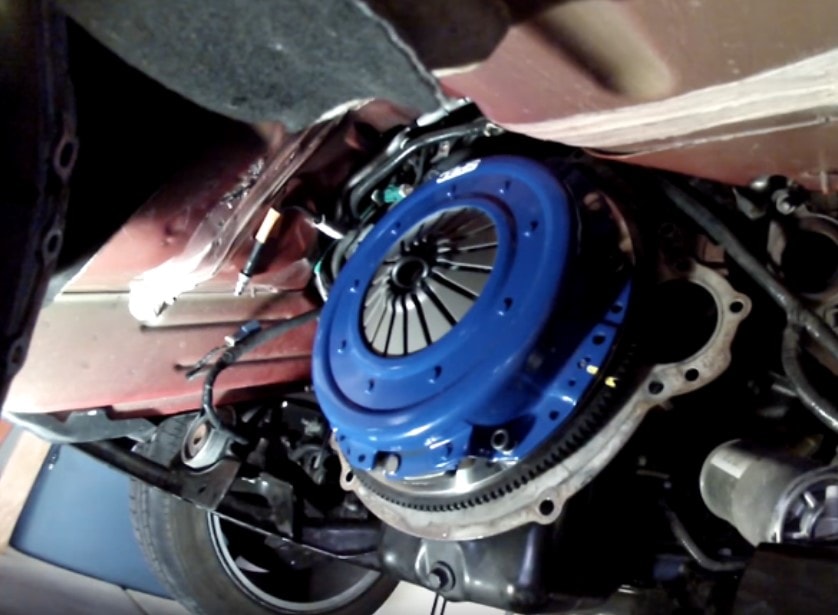
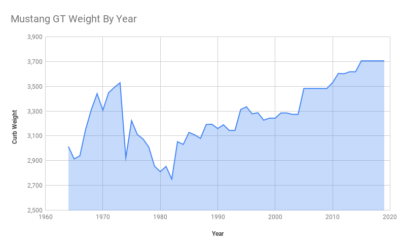


Recent Comments